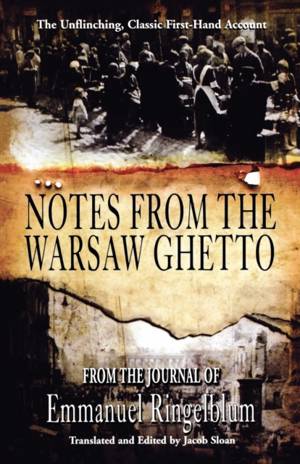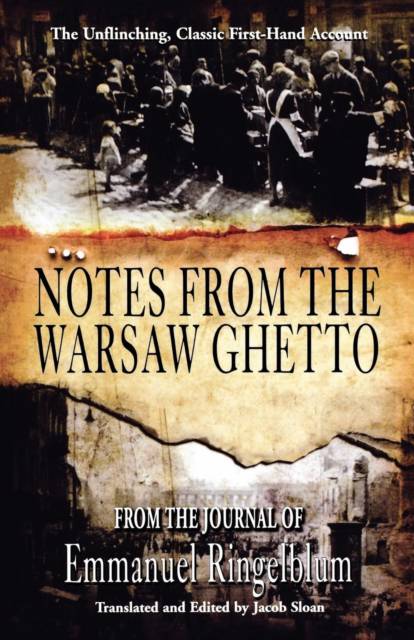
- Afhalen na 1 uur in een winkel met voorraad
- Gratis thuislevering in België vanaf € 30
- Ruim aanbod met 7 miljoen producten
- Afhalen na 1 uur in een winkel met voorraad
- Gratis thuislevering in België vanaf € 30
- Ruim aanbod met 7 miljoen producten
Zoeken
Notes from the Warsaw Ghetto
The Unflinching, Classic First-Hand Account
Emmanuel Ingelblum
Paperback | Engels
€ 38,95
+ 77 punten
Uitvoering
Omschrijving
Notes from the Warsaw Ghetto is the moving account of the horror of the Warsaw Ghetto--written by the recognized archivist and historian of the area while he lived through it. Through anecdotes, stories, and notations--some as brief as was slapped today in Zlota Street--there emerges the agonizing, eyewitness accounts of human beings caught in the furor of senseless, unrelenting brutality. In the Journal, there is the whole of life in the Ghetto, from the erection of the Wall, in November 1940, for hygienic reasons, through the brief period of deceptive calm to the eventual mass murders. It is a portrait of man tested by crisis, stained at times by the meanness of avarice and self-preservation, illumined more often by moments of nobility. Language Notes: English, Yiddish (translation) Emmanual Ringelblum was 39 when he began his notes. When the Germans first invaded Poland, Ringelblum, who could have stayed abroad and escaped, returned to Warsaw from Switzerland knowing that his was an historical event of importance for his people and a moment in time that must be forever a part of written history. As the recognized archivist of the Ghetto he gathered around him a staff, and assigned each to cover a specific part of Ghetto life. From these reports and this notes, he assembled his Journal. On March 7, 1944, Emmanual Ringelblum was executed among the ruins of Warsaw, together with his wife, his son, and thirt-eight others who shared his hiding place.
Specificaties
Betrokkenen
- Auteur(s):
- Uitgeverij:
Inhoud
- Aantal bladzijden:
- 402
- Taal:
- Engels
Eigenschappen
- Productcode (EAN):
- 9781596873315
- Verschijningsdatum:
- 1/03/2006
- Uitvoering:
- Paperback
- Formaat:
- Trade paperback (VS)
- Afmetingen:
- 137 mm x 213 mm
- Gewicht:
- 453 g

Alleen bij Standaard Boekhandel
+ 77 punten op je klantenkaart van Standaard Boekhandel
Beoordelingen
We publiceren alleen reviews die voldoen aan de voorwaarden voor reviews. Bekijk onze voorwaarden voor reviews.








